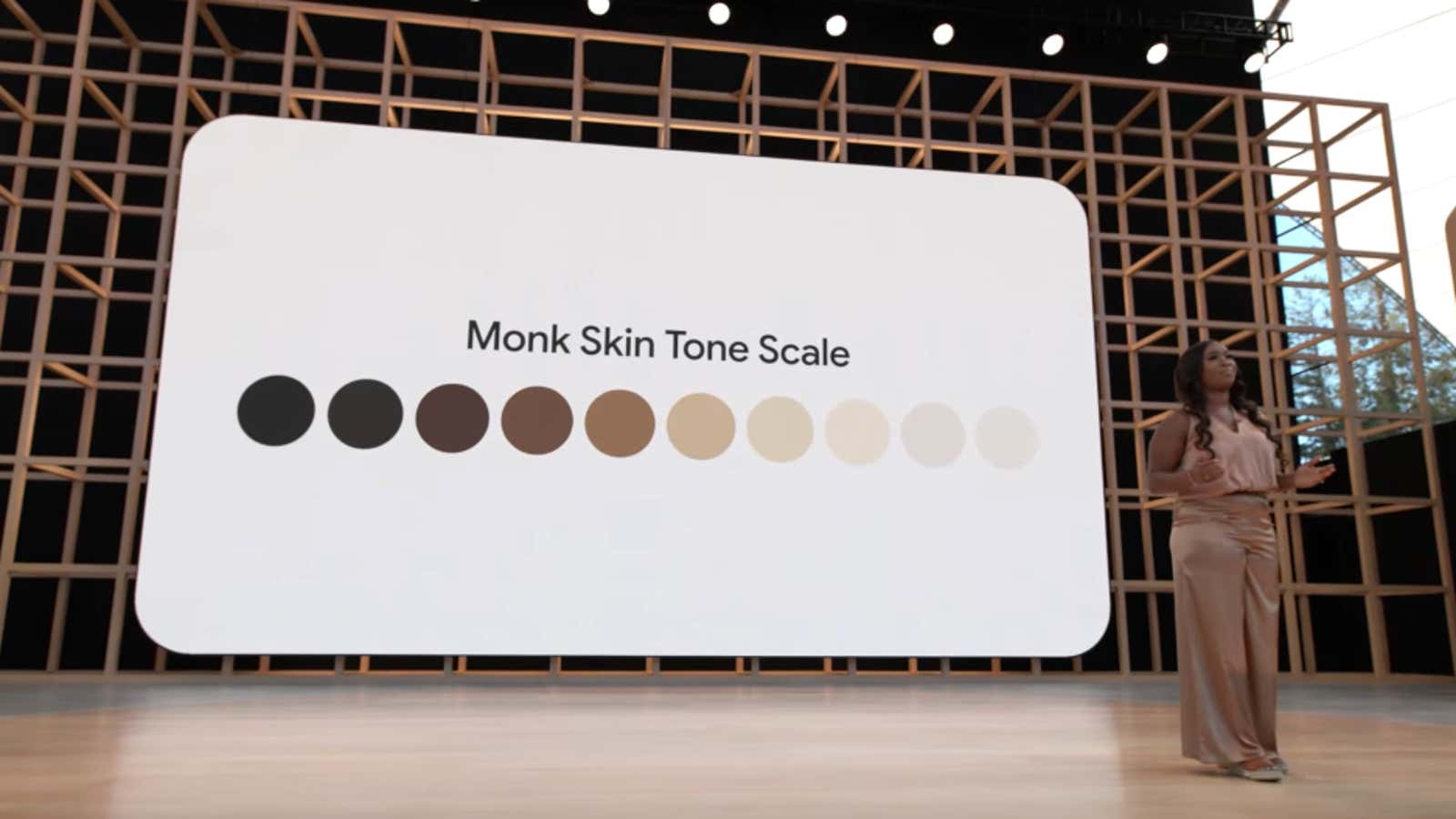During last month’s Google I/O event livestreamed on YouTube, the company introduced the Monk Skin Tone (MST) scale, which it has begun implementing on Google Image search (which includes images and commercial products) and Google Photos in an attempt to tame internet racism.
The new scale is replacing the Fitzpatrick Skin Type, a standard of six colors developed in 1975 and used online since the internet’s inception. But researchers have criticized the Fitzpatrick Skin Type because it is less accurate on shades of darker skin tones, which could cause AI to misidentify or misrepresent people with darker skin.
In its quest to change how people online perceive skin color, Google is working with Harvard sociologist Ellis Monk. He has studied colorism for 10 years and designed the scale that he believes will help Google minimize racial bias from its images. Monk became interested in this issue because he experienced dehumanization by cameras that failed to detect his face as they couldn’t get his skin tone right.
“The reality is, the Fitzpatrick scale really didn’t do a good job of differentiating, even towards the more middle or lighter end of the scale for a lot of people of color,” Monk said according to AfroTech.
In 2018, MIT and Stanford researchers found that facial analysis software had an error rate of 0.8% for light-skinned men, and 34.7% for dark-skinned women. The difficulty in lowering that error rate, along with the possibility for discrimination, would inform IBM’s decision to discontinue its facial recognition software two years later. In a study of the MST scale, US-based Google users found the MST scale more representative of their skin tones compared to the current tech industry standard.
Google is encouraging other tech companies to use the MST by making it open-sourced. Stemming systemic AI bias on the internet, however, will not be easy.
“By open-sourcing the scale, our goal is to improve it over time in partnership with the industry,” said Anne Jean-Baptiste, head of product inclusion at Google, at the I/O event.
Getting competitors on board
Last year, Google announced that it had integrated “Real Tones” into its Pixel 6 and Pixel 6 Pro smartphones, the most significant step any tech company had taken to correct colorism before this one.
However, it’s hard to know when—or whether—other tech companies will adopt the MST. Apple, Tesla, Meta, Samsung, Oracle, and Microsoft, which make photo and video software as well as hardware on which images are displayed, have not yet committed to using it.
Google is training its machine learning algorithms on the new scale starting with beauty products before it applies it to a wider range of images. The search giant will be a pioneer in combatting colorism and racism online, but training AI to scan through trillions of images in its servers, as well as implementing the new scale, could take longer than it anticipates.
If companies do not have enough data for each of the 10 color shades, it could be difficult to eliminate color bias from their software.
But if the MST ultimately becomes the standard, it could make the internet and AI more inclusive. However, first, Google has to do the difficult task of kickstarting the revolution.
